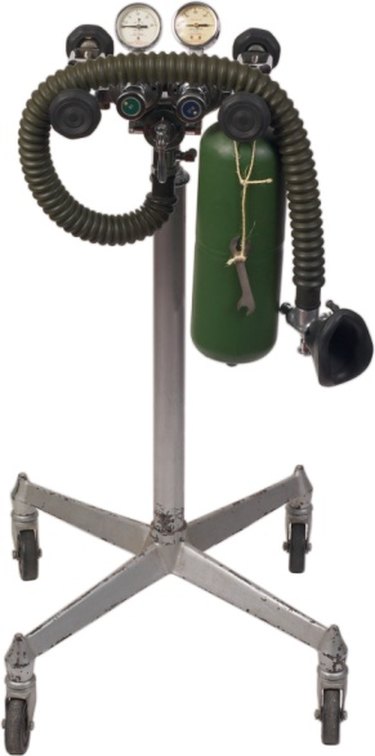
A breathing machine is a piece of equipment that facilitates breathing in the case of low oxygen levels in the blood stream. It aids the body to overcome the inability to breath normally, such as during respiratory failure. Many people have afflictions such as asthmatic conditions, lung cancer and chronic obstructive lung disease. Breathing machines help the victim of lung problems carry on a more normal life by aiding the person as needed. From oxygen concentrators to ventilators, the type of breathing machine used varies according to the problem.
Asthma Nebulizers
Video of the Day
Asthma nebulizers help people with asthma by delivering liquid medication via a mist, which is inhaled into the lungs through this machine. Nebulizers are used in the home and are effective in delivering asthma medications to adults and children. Physicians write the prescription for the nebulizer machine, which usually is covered under insurance. A specialist who works with the machinery comes to the person's home and explains how to use it.
Video of the Day
C-PAP Breathing Machines
Sleep apnea is a dangerous condition in which the person does not receive enough oxygen while sleeping. This can be caused by a short neck, or an anatomically blocked airway caused by an enlarged pharynx. A C-PAP (continuous positive airway pressure) breathing machine blows air into the nose via a mask, which in turn keeps the airway open and aids in the absorption of oxygen. A respiratory therapist works with the doctor to teach the patient how to use it and coordinate the needs of the person who has sleep apnea. The physician writes the script for the C-PAP machine.
BIPAP Breathing Machines
The BIPAP (bilevel positive airway pressure) breathing machine aids the patient to breath normally. It pushes air into the lungs by keeping the lungs open and thus allowing more oxygen to enter. The machine is small and can be used at bedside at home. A face mask is worn and supplies the needed pressure to keep the patient breathing in and out (inhalation and exhalation) so oxygen enters the air sacs within the lungs. A person who cannot breath completely on his own when sleeping, such as a person living with obesity with a history of respiratory problems, uses a BIPAP machine. The physician may order this machine by prescription.
Respirators
A respirator assists the patient in breathing and treats diseases while delivering oxygen. People with asthma, chronic obstructive lung disease, bronchitis and other respiratory diseases benefit from the respirator. It supplies pure oxygen to the person's heart and lungs. It is a small suitcase that contains a small bottle of water for humidification of the oxygen and a battery pack, which can be used in an automobile and can be charged within the home. It provides a control network that automatically selects the battery pack as the power source when either of the plug-in connections are in use. This type of portable ventilator needs a physician's authorization and respiratory monitoring via a therapist. The oxygen is delivered via a tracheotomy, which is a surgical portal of entry into the trachea to allow a tube in place to create an official airway for breathing.
Oxygen Concentrator
The oxygen concentrator delivers pure oxygen via a mask or nasal cannula, a small pronged tube that is placed in both nostrils. It may be used for oxygen therapy and in hyperbaric chambers. Oxygen therapy delivers pure oxygen into the lungs and heart of the person and raises it to a level that will aid the person by giving a sense of well being. Some people need this therapy at night to help with dropped oxygen levels which are caused by chronic lung conditions, as well as subsiding acute conditions such as pneumonia.